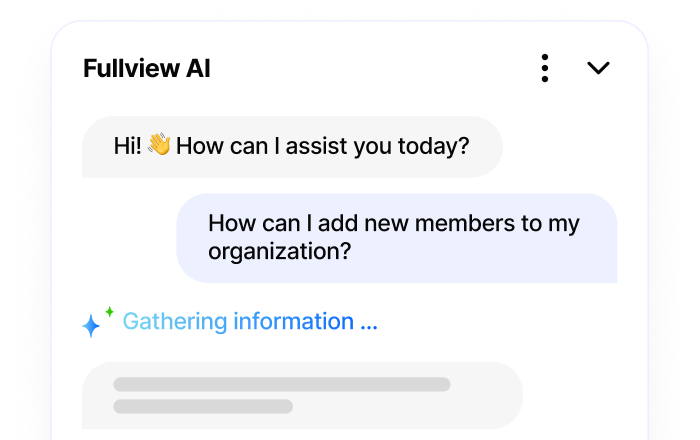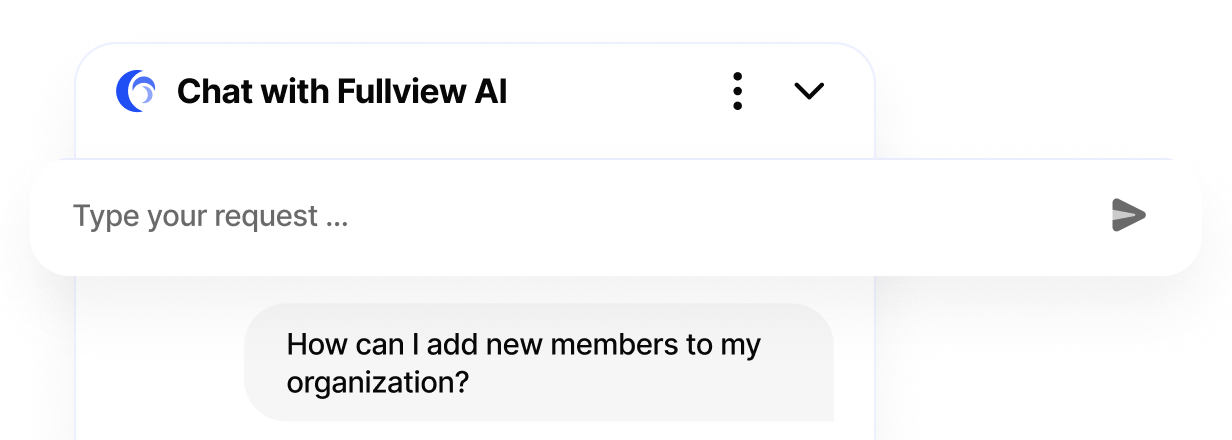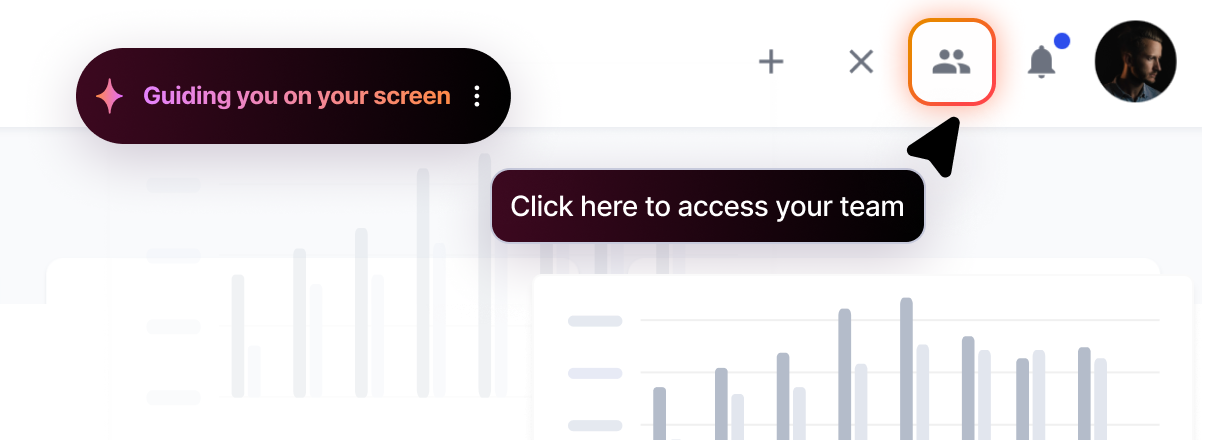CSAT or Customer Satisfaction Score is one of the most important customer support metrics to track.
That's because it's simple to understand, easy to calculate and very good at giving you an overall idea of exactly how your business, service or product is being received by your customers.
We've covered CSAT before, including why it's crucial if you want your SaaS company to grow exponentially and how CSAT differs from NPS (or Net Promotor Score).
But let's say you've designed a great CSAT survey, sent it out to your target group and collected a bunch of responses. How do you calculate your score?
CSAT Calculation Formula Explained
CSAT surveys are simple and targeted: they often consist of no more than one question scored on a scale of 1 to 5.
- Scores of 1-3 indicate unsatisfied customers
- Scores of 4-5 indicate satisfied customers (80-100% satisfaction level)
- The CSAT formula: (Number of satisfied customers / Total responses) × 100
Once you've sent out your surveys and collected your answers, you'll need to work your way through the following steps in order to calculate your score.
Quick CSAT Calculation Steps
- Add up all the 4 and 5 responses you got to your survey
- Add up the total number of responses across all scores
- Divide the total number of 4 and 5 responses by the total number of responses
- Multiply that by 100 to arrive at the percentage
Example: You recently sent out 100 surveys and everyone responded! You count the number of 4 and 5 answers and realize that 50 responses were either a 4 or a 5. To calculate CSAT, you'd have to divide 50 by 100 (the total number of responses) and multiply that number by 100, which would give you a CSAT score of 50%.
Try It Yourself
Calculate CSAT in Excel
If you have a bunch of survey data to crunch, you can copy-paste our Excel template or take a look at the formula for a quick and easy way to calculate CSAT. Find our CSAT calculator spreadsheet here.
What Is a Good CSAT Score in 2025?
Once you've arrived at a score, you're going to have to determine how well you did and the margins by which you'll have to improve in order to ace customer support experiences.
This isn't straightforward, though. CSAT scores vary widely across industries, so you'll have to do a bit of research on your own to determine where you stand.
For industry averages, see our list of CSAT scores by industry.
For this breakdown, we'll concentrate on the SaaS industry.
Key benchmark: 77% is the standard CSAT score for SaaS and computer software companies, according to the American Customer Satisfaction Index.
Why Track CSAT Score: 5 Key Benefits
Regularly calculating your CSAT score has a number of advantages and can tell you important things about how your CX, customer support and product is performing.
- Measure expectation gaps: Understand if you are consistently meeting customer expectations or falling short across different touchpoints
- Industry benchmarking: Compare your performance against broader industry standards (like the 77% SaaS benchmark) or direct competitors
- Identify specific pain points: Discover which features, support agents, or interactions are causing dissatisfaction
- Guide strategic decisions: Use satisfaction data to prioritize improvements in product, support processes, or customer experience workflows
- Predict customer retention: Track CSAT trends over time to identify at-risk accounts before they churn
When is CSAT Statistically Significant?
If you get 10 responses on your survey, can you really make sense of the results? Probably not. Just like any other metric, in order for it to be relevant, the sample size needs to be big enough. You also want to make sure you're tracking CSAT over time and in a consistent way.
- Minimum 30 responses needed for basic statistical validity
- 50+ responses recommended for reliable insights
- Anything below 30 responses may not represent your broader customer base
Having said that, CSAT can still be useful even if you get only 5 responses, because you'll then be able to identify which customers are satisfied and which are not, meaning you can investigate why. However, with responses that low, you shouldn't be looking at the score per se, but what the answers to those surveys can reveal about your customer experiences.
How Often Should You Survey Your Customers?
How often you send out CSAT surveys depends on a number of factors. Some of which to consider are:
- Business cycle: Consider the average customer lifecycle and interaction frequency. Higher interaction volume means more frequent CSAT measurement
- Industry standards: Research publicly available data on survey frequency in your sector and among competitors
- Business objectives: Align measurement with major milestones like feature releases, market expansions, or onboarding campaigns
- Resource capacity: Balance the effort of designing, distributing, and analyzing surveys against the value of frequent measurement
- Historical trends: Increase frequency if you see significant score fluctuations between measurement periods
In general, there are two ways of surveying your customers:
- Transactional surveys: Sent after each support interaction for immediate feedback
- Relationship surveys: Sent at fixed intervals (quarterly, bi-annually) to measure overall satisfaction trends
Your goal is to collect as many responses as possible, at the most relevant times. But it is important that you look at how good an experience you are providing over time, and avoid, for instance, doing a single survey once a year and then tracking nothing for the following 12 months.
How to Use and Interpret Your CSAT Score
The score itself is a great summary of how good an experience you are providing, but it says nothing about what makes customers satisfied (or dissatisfied).
We'd recommend that you always combine the quantitative insights provided by CSAT scores with qualitative ones, which can be collected by an open question in your survey, for example. Another way to collect qualitative data is to directly reach out to customers to learn more about the reasons for their rating.
Practical ways to extract deeper insights:
- Add one open-ended question to your CSAT survey asking "Why did you give this rating?"
- Reach out directly to customers who score 1-3 to understand specific frustrations
- Track CSAT by customer segment (new vs. existing, product tier, industry) to identify patterns
- Monitor trends over multiple measurement periods rather than reacting to single data points
- Cross-reference CSAT drops with product changes, support team shifts, or seasonal factors
Wrapping Things Up
Measuring customer satisfaction is crucial for businesses to understand how their products, services, or support are perceived by customers. The CSAT calculation is straightforward: divide satisfied responses (4-5 stars) by total responses and multiply by 100.
Key points to remember:
- 77% is the benchmark CSAT score for SaaS companies
- Minimum 30-50 responses needed for statistical significance
- Combine quantitative scores with qualitative feedback for actionable insights
- Survey frequency should match your customer interaction patterns and business objectives
- Track trends over time rather than fixating on individual scores
The frequency of measuring CSAT can vary based on factors such as business cycle, industry standards, resource availability, business objectives, and historical data trends. It is important to strike a balance between capturing timely feedback and the practicality of conducting the measurement process.
Frequently Asked Questions
How to Calculate CSAT Score Step by Step?
Follow these four steps: (1) Count all responses rated 4 or 5 stars, (2) Count your total number of survey responses, (3) Divide satisfied responses by total responses, (4) Multiply the result by 100 to get your percentage. For example, if 75 out of 100 customers gave you 4-5 stars, your CSAT is 75%.
Is 75% a Good CSAT Score?
Yes, 75% is a good CSAT score for most industries. For SaaS companies specifically, the benchmark is 77% according to the American Customer Satisfaction Index. Scores between 60-80% are considered standard performance, while anything above 80% indicates excellent customer satisfaction.
What Should I Do If My Response Rates Are Too Low to Be Meaningful?
Send surveys immediately after support interactions when experiences are fresh. Keep surveys to one question maximum and make them mobile-friendly. Target your most critical touchpoints rather than every interaction. A minimum of 30 responses is needed for basic insights, though 50+ responses provide statistical significance.
How Do I Handle Seasonal Variations in My CSAT Scores?
Track CSAT data across multiple seasons to establish baseline patterns. During predictably busy periods (end-of-quarter, holidays), adjust benchmarks accordingly. Segment analysis by time period to separate seasonal noise from underlying trends. Focus on maintaining service levels during peak seasons rather than improvement initiatives.
Should I Weight Different Types of Support Interactions Differently in My CSAT Calculation?
Track critical interaction types (onboarding, escalations) separately rather than weighting them in a single score. Maintain separate CSAT scores for different channels (chat, phone, email) to identify channel-specific improvements. Ensure measurement aligns with what actually drives customer retention.
What's the Relationship Between CSAT and Other Metrics Like NPS or Churn Rate?
CSAT measures immediate satisfaction with specific interactions. NPS gauges overall loyalty and likelihood to recommend. CSAT fluctuates more frequently than NPS. Declining CSAT trends from individual accounts predict churn better than absolute scores. Track all three metrics together for comprehensive insights.
How Do I Get My Team to Act on CSAT Feedback Instead of Just Tracking It?
Establish clear ownership for reviewing scores, investigating low ratings, and implementing changes. Set up automatic alerts for scores below defined thresholds. Create feedback loops showing how individual interactions impact overall scores. Use session replay tools to see exactly what customers experienced during low-scoring interactions, making it easier to identify and fix friction points.
Should I Survey Every Customer or Focus on Specific Segments?
Start with engaged customers and frequent support users, they respond more and provide actionable feedback. Segment by customer value, interaction type, and product usage. Survey high-value accounts more frequently. Space requests appropriately to avoid survey fatigue.
What If My CSAT Scores Aren't Improving Despite Making Changes?
Verify you're measuring the right aspects, low CSAT may reflect product issues rather than support quality. Check survey timing captures the full customer journey. Ensure changes address root causes from qualitative feedback. Consider if external factors (product complexity, customer expectation changes) are affecting scores. Review actual user sessions to identify friction points that traditional feedback might miss.
How Can I Automate CSAT Collection Without Making It Feel Impersonal?
Trigger surveys based on interaction success indicators rather than just time-based rules. Personalize messages with specific interaction details. Use conversational survey formats that feel like natural follow-ups. Explain how feedback improves their specific experience.
Should I Publish My CSAT Scores Publicly or Keep Them Internal?
Share general satisfaction themes publicly rather than detailed scores. If publishing scores, focus on trends and improvements with context about addressing feedback. Customers value feeling heard more than seeing specific numerical scores. Include transparency about improvement actions taken.








.webp)
